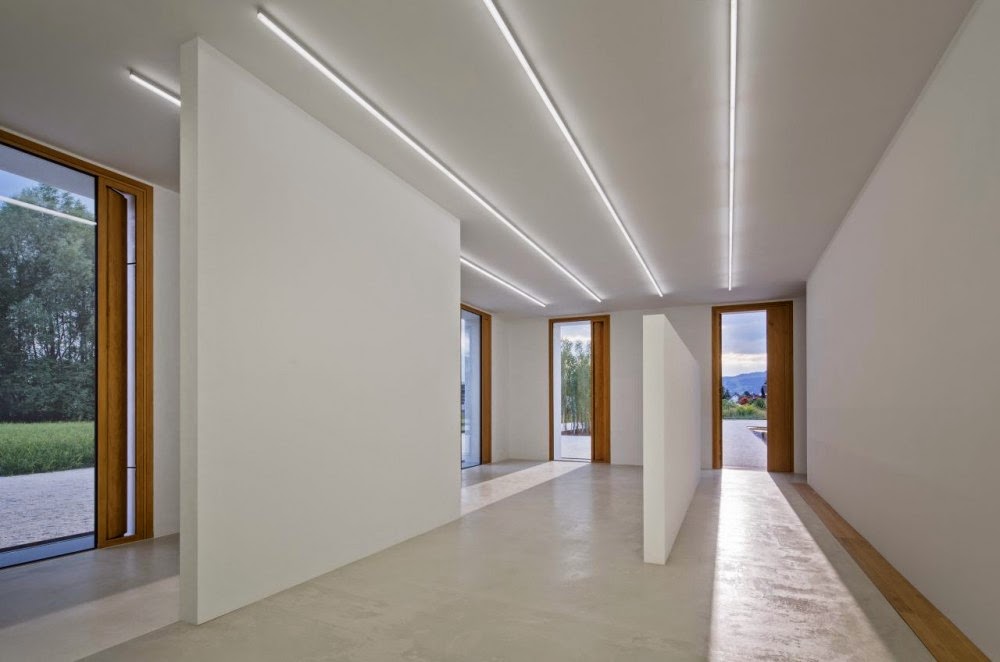Architects Baumschlager Eberle designed this new office building in Lustenau, Austria, based on a minimalist design approach that apart from the structure has also been radically applied to the building systems, for optimum energy use.
Therefore, the low-tech stone building has no heating, ventilation or cooling system, the flow of energy being controlled by human hand.
Photography © Eduard Hueber
Description from Baumschlager Eberle:
While buildings require less and less energy, more and more is being spent on the maintenance and service needed to sustain this reduction. The prospect of buildings functioning as power stations is highly reminiscent of the promises of Modernism. The only disruptive factor in this energy balance from an ideal world, however, is the human element. Baumschlager Eberle have no intention of replacing nature with technology in this office block in Lustenau. Their aim is rather to establish meaningful coherence for the user.
The building has no heating, ventilation or cooling system, the flow of energy being controlled by human hand. Above all, however, this is a stone building with walls, doors and high-ceilinged rooms. It needs little grey energy, and elementary architectural means are used to create a sense of well-being that derives from the pleasant proportions and self-explanatory use. The constructional and energy-related foundations needed to achieve this effect illustrate the know-how Baumschlager Eberle have built up over 27 years. The envelope has a cavity wall structure with each wall consisting of 36-centimetre bricks. The inner layer of this interconnected shell ensures high compressive strength while the outer layer guarantees efficient insulation. Deep window reveals reduce the heat input, while vents fastened inside are controlled by sensors to provide a pleasant room climate. In winter, for example, the waste heat ensures a high energy input and the window vents only open if the volume of carbon dioxide in the room increases. During hot weather in summer the vents open at night to induce a draught for natural cooling. Sensors support, in a perhaps less controlled manner, the normal activity of the occupants of a building that in conceptual, aesthetic and everyday terms will retain its validity for a long time to come.
Source: Baumschlager Eberle | Archdaily





















